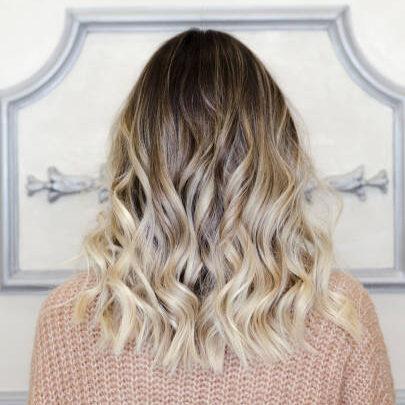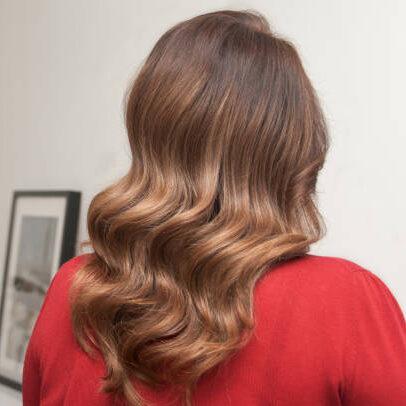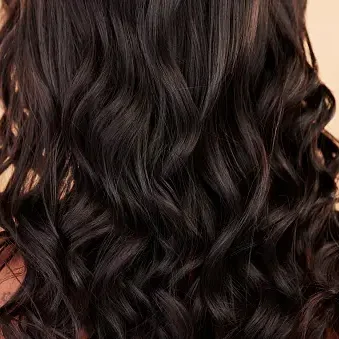Balayage, a French term meaning “to sweep” or “to paint,” has taken the world of hair coloring by storm, offering a natural, sun-kissed look that has become the epitome of effortless beauty. In this detailed guide, we will explore the art of balayage, unraveling its technique, benefits, maintenance, and tips for achieving those perfect highlights.
Understanding Balayage Hair :

- Technique Overview: Balayage is a modern hair coloring technique where color is applied by hand, showcasing a departure from traditional highlighting methods.
- Artistic Application: This method involves the meticulous hand-painting of color onto the hair, allowing for a bespoke, personalized outcome.
- Customization: Balayage is not just a technique; it’s a philosophy emphasizing the uniqueness of each person’s hair, resulting in a tailored and nuanced effect.
Versatility Unleashed: Tailoring Balayage to Every Hair Type and Length
- All-Inclusive Adaptability: Balayage is incredibly versatile and suitable for all hair types and lengths, offering a wide scope for customization.
- Personalization Possibilities: From subtle, sun-kissed highlights to bold and dramatic effects, balayage hair can be adapted to meet various aesthetic preferences.
- Color Manipulation: The technique involves skillful play with color depth, placement, and saturation, providing limitless possibilities for individualized outcomes.
In essence, balayage hair is a dynamic and adaptable coloring technique, allowing for an artistic, freehand approach that caters to every individual’s hair’s diverse preferences and characteristics
Advantages of Balayage Hair:
Balayage hair offers a natural and low-maintenance coloring option, creating a seamless blend between colored and natural hair. Its versatility, softening effects, and minimal damage make it a popular choice for those seeking a personalized and stylish look:
- Natural Gradation: Balayage ensures a smooth transition between colored and natural hair, replicating the sun’s gentle lightening effect for a more authentic appearance.
- Low Maintenance: With its natural-looking regrowth, balayage hair require less upkeep than traditional methods, reducing the frequency of salon visits and maintenance efforts.
- Versatility: Balayage is a versatile technique adaptable to various hair lengths, textures, and colors, allowing for both subtle and bold looks to suit diverse preferences.
- Face-framing Effect: Strategically applied balayage can frame the face, enhancing features and providing a soft, radiant glow for a personalized and flattering result.
- Customization for All Hair Types: Suitable for straight, wavy, and curly hair, balayage can be tailored to complement the natural movement and texture, providing an authentic look.
- Time-Efficient Application: The freehand painting technique of balayage allows for a quicker application process compared to traditional foil highlights, making it a time-efficient option.
- Minimal Damage: As balayage hair typically involves surface coloring, it is less damaging than methods penetrating the entire hair shaft, resulting in healthier-looking hair.
- Easy Transition: Balayage hair allows for an easy transition between different colors or shades, making it convenient for those who enjoy experimenting with their hair color seamlessly.
Preparing for Balayage Hair:

Achieving the perfect balayage hair requires careful preparation to ensure a seamless and natural-looking result. Before diving into the coloring process, it’s essential to lay the groundwork for healthy and clean hair. Here’s a step-by-step guide to preparing for a stunning balayage transformation:
Healthy Hair:
- Prioritize addressing existing damage or split ends through regular trims or treatments.
- Deep conditioning treatments can be beneficial to enhance overall hair health before the balayage process.
Clean Hair:
- Shampoo the hair thoroughly to remove any product buildup.
- Avoid using heavy conditioners or styling products that can create a barrier between the hair and the balayage color.
The Balayage Hair Process:
Sectioning:
- Divide the hair into manageable sections using clips or hair ties to ensure an even application of color.
- Sections can be based on the natural hair parting or customized based on the desired balayage pattern.
Painting Technique:
- Use a sweeping or freehand motion to apply color to the mid-lengths and ends of the hair.
- Focus on creating a natural, gradient effect by blending the color seamlessly into the base.
Balayage Hair Tools:
- Brushes: Soft bristle brushes are commonly used for a softer, more diffused look.
- Paddles: Flat paddles can be employed for a more structured and defined balayage effect.
- Combination: Some colorists may use a combination of brushes and paddles to achieve a customized texture.
Experiment with different tools to create diverse effects, such as bold contrasts or subtle highlights. Vary the pressure and angle of application for a more nuanced and personalized balayage result.
Remember, the balayage process is an art, and the key is to achieve a natural, sun-kissed appearance by adapting techniques and tools to suit the individual’s hair type and desired outcome.
Aftercare and Maintenance of Balayage Hair:
Maintaining the vibrancy and health of balayage-treated hair is crucial for a long-lasting and stunning look. Proper aftercare ensures that the color stays fresh, and the hair remains in optimal condition. Here’s a concise guide on aftercare and maintenance:
Gentle Cleansing:
- Use sulfate-free color protectant shampoos to prevent color stripping and maintain the integrity of the balayage.
- Wash hair with lukewarm water, as hot water can contribute to color fading.
Hydrating Conditioner:
- Apply a nourishing, color-safe conditioner to keep the hair hydrated and prevent dryness.
- Consider using a deep conditioning treatment weekly to maintain moisture balance.
Regular Trims:
- Schedule regular trims to prevent split ends and maintain the shape of the balayage.
- This helps in preserving the overall health and appearance of the colored hair.
Avoiding Heat Damage:
- Limit the use of hot styling tools to prevent excessive heat damage.
- When styling, use heat protectant sprays to shield the hair from potential harm.
Color-Enhancing Products:
- Use color-enhancing shampoos and conditioners to revive and maintain the vibrancy of the balayage.
- Choose products that match the specific tones in your balayage for optimal color enhancement.
Professional Advice:
- Consult with your hairstylist for personalized aftercare recommendations based on your hair type and the specific balayage technique used.
- Professional guidance can help address any specific concerns and optimize your hair care routine.
By following these aftercare tips, you’ll be able to extend the life of your balayage, keeping it fresh, vibrant, and healthy between salon visits.
Common Balayage Hair Mistakes to Avoid:

While balayage is a beautiful and versatile hair coloring technique, certain mistakes can compromise the results. To ensure your balayage looks flawless and maintains its vibrancy, be mindful of these common pitfalls:
- DIY without Experience: Avoid attempting balayage at home without proper knowledge and experience, as achieving the desired results requires skill and technique.
- Ignoring Hair Health: Coloring over damaged or unhealthy hair can lead to uneven color absorption and compromised results. Address hair health before applying balayage.
- Incorrect Sectioning: Improperly sectioned hair can result in uneven color distribution. Ensure precise sectioning for a balanced and seamless balayage.
- Overlooking Color Compatibility: Choosing colors that clash with your natural base can create a jarring effect. Consult with a professional to select hues that complement your skin tone and base color.
- Skipping a Strand Test: Neglecting to perform a strand test before full application can result in unexpected color outcomes. Always conduct a strand test to preview the final result.
- Overusing Heat Styling Tools: Excessive use of hot styling tools can lead to damage and color fading. Limit heat styling and use protective products to preserve the balayage.
Avoiding these common balayage mistakes is essential for achieving a stunning and long-lasting result. Consulting with a skilled hairstylist ensures that the balayage process is tailored to your hair type, hair extensions and preferences, minimizing the risk of errors.
Conclusion:
In summary, balayage offers a versatile and personalized approach for achieving natural, sun-kissed highlights. This guide has explored the technique’s advantages, preparation steps, aftercare, and common mistakes to avoid.
Balayage’s appeal lies in its adaptability to various hair types, providing a low-maintenance, face-framing effect. To ensure success, it’s crucial to prioritize healthy hair, seek professional advice, and avoid common pitfalls.
Embrace balayage as a blend of art and science to effortlessly achieve stunning, individualized highlights that complement your unique style.











